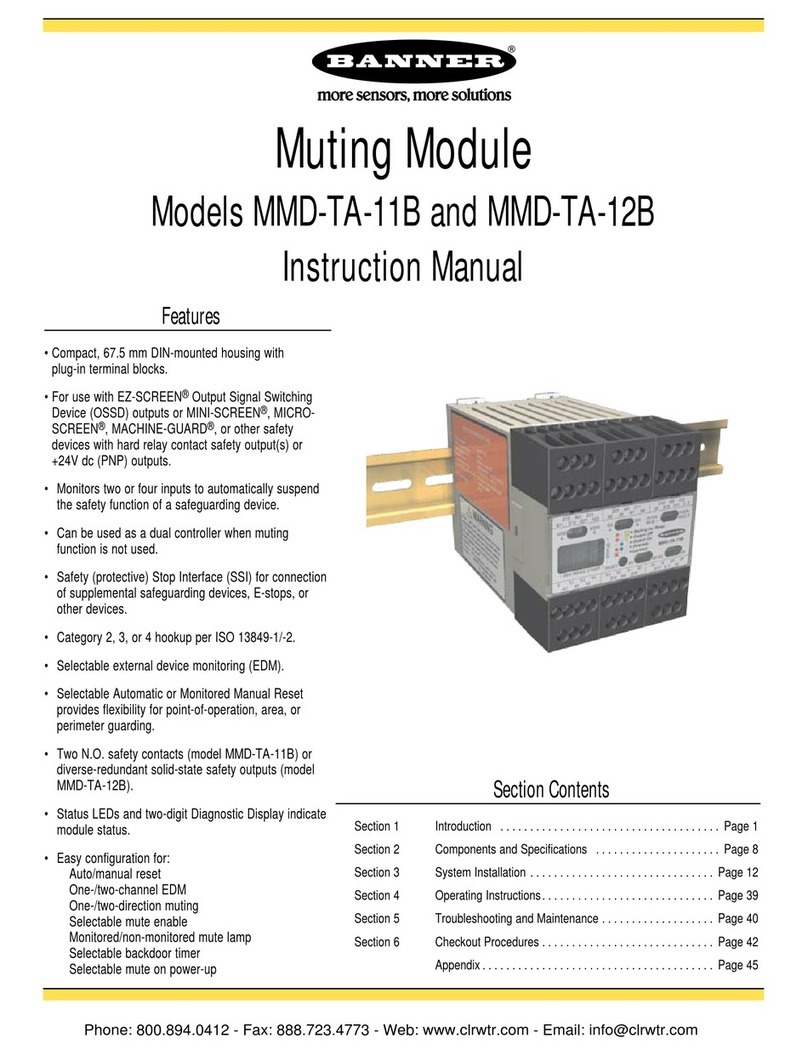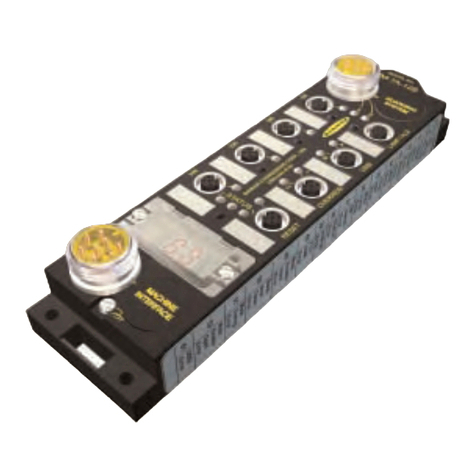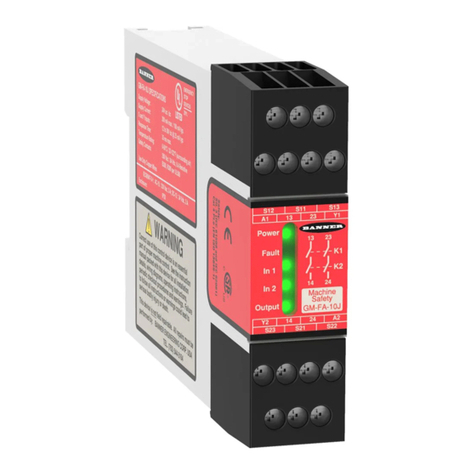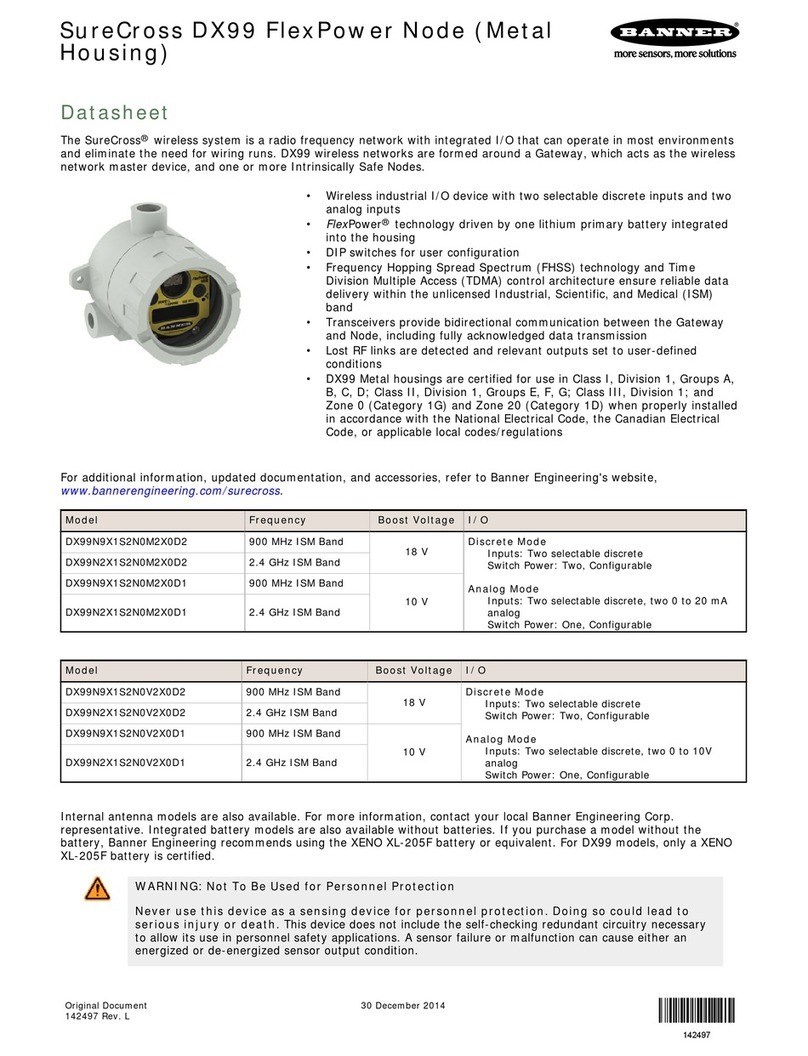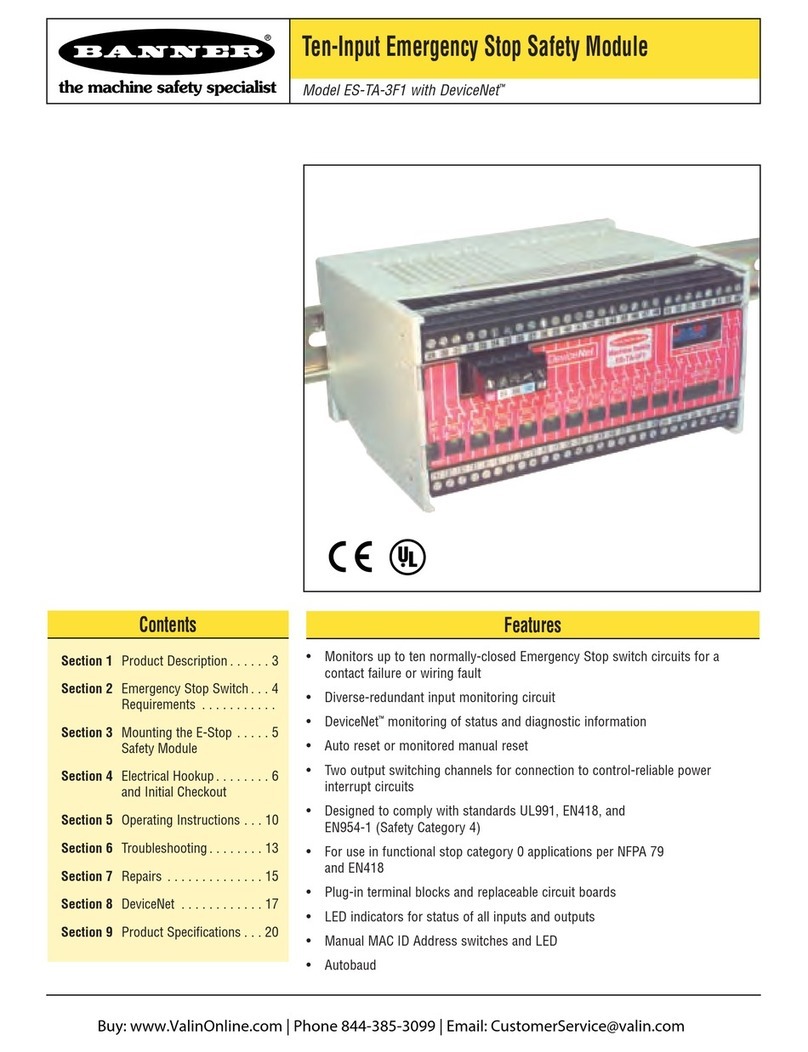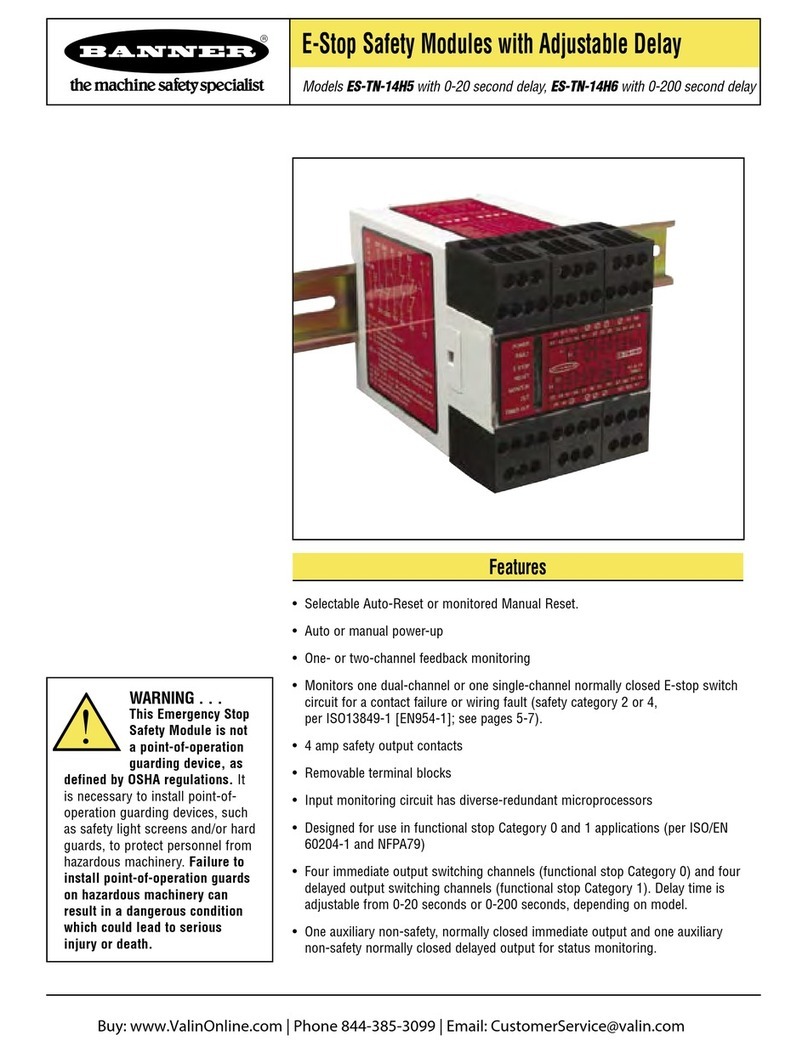
The MultiHop Configuration Tool requires that you connect your master radio to your
computer using either a USB to RS-485 (for RS-485 radios) or a USB to RS-232 (for
RS-232 radios) converter cable. For RS-485 models, Banner recommends using cable
model BWA-UCT-900, an RS-485 to USB adapter cable with a wall plug that can power
your 1 Watt MultiHop radio while you are configuring it.
If you use an adapter cable that does not also supply 10-30V dc to your radio, use the
DIP switches to set the MultiHop Radio to transmit at 250 mW.
When the MultiHop Configuration Tool launches, it automatically checks to see if a newer version of the software is available. If a newer
version is available, a dialog box displays on the screen to ask you if you want to download the new version or ignore the new version. If
you select download, the newer version automatically downloads, installs, and relaunches the program for you.
Setting Up Your MultiHop Network
To set up and install your wireless MultiHop network, follow these steps:
1. If your radios have DIP switches, configure the DIP switches of all devices.
2. Connect the sensors to the MultiHop radios if applicable.
3. Apply power to all devices.
4. If your MultiHop radio has rotary dials, set the MultiHop Radio (Slave) ID. If your MultiHop radio has no rotary dials, continue to the
next step.
5. Form the wireless network by binding the slave and repeater radios to the master radio. If the binding instructions are not included in
this datasheet, refer to the product manual for the binding instructions.
6. Observe the LED behavior to verify the devices are communicating with each other.
7. Conduct a site survey between the MultiHop radios. If the site survey instructions are not included in this datasheet, refer to the
product manual for detailed site survey instructions.
8. Install your wireless sensor network components. If the installation instructions are not included in this datasheet, refer to the product
manual for detailed installation instructions.
For additional information, including installation and setup, weatherproofing, device menu maps, troubleshooting, and a list of accesso-
ries, refer to one of the following product manuals.
• MultiHop Radio Quick Start Guide: 152653
• MultiHop Radio Product Manual:151317
• MultiHop Register Guide (End User Edition): 155289
Configuring the DIP Switches
Before making any changes to the DIP switch positions, disconnect the power. For devices with batteries integrated into the housing,
remove the battery for at least one minute. DIP switch changes will not be recognized if power isn't cycled to the device.
DIP Switch Settings (MultiHop)
Switches
Device Settings 1 2 3 4 5 6 7 8
Serial line baud rate 19200 OR User defined re-
ceiver slots
OFF* OFF*
Serial line baud rate 38400 OR 32 receiver slots OFF ON
Serial line baud rate 9600 OR 128 receiver slots ON OFF
Serial line baud rate Custom OR 4 receiver slots ON ON
Parity: None OFF* OFF*
SureCross MultiHop Data Radio Module
P/N 154365 Rev. C www.bannerengineering.com - tel: 763-544-3164 3

